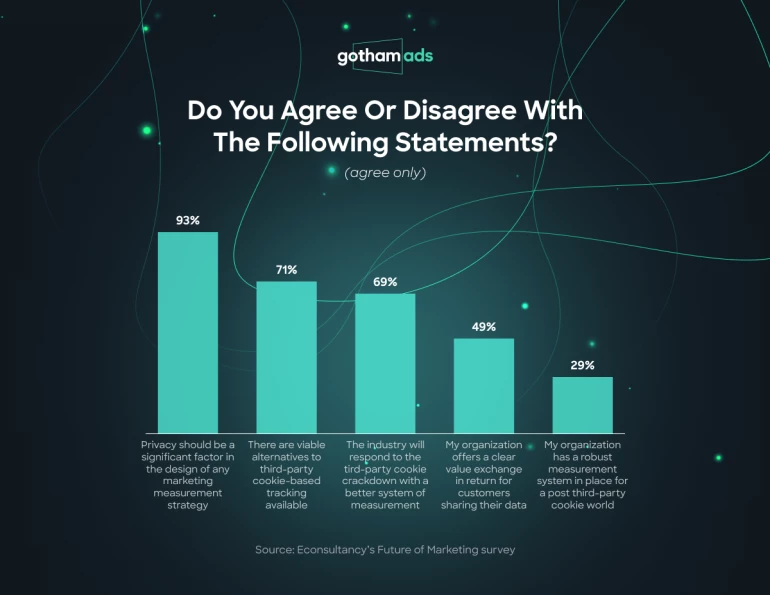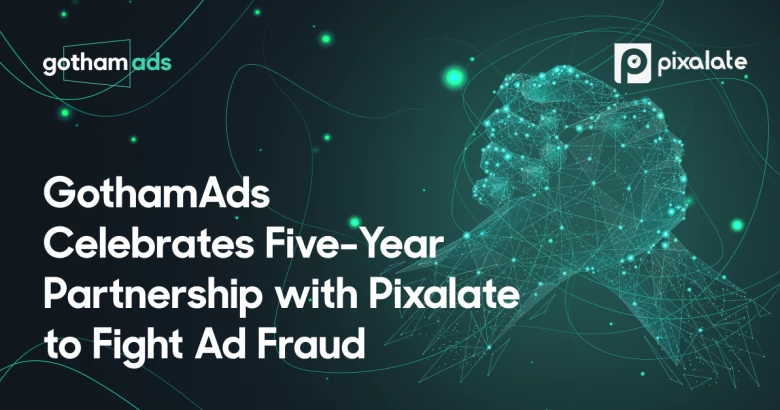Top 5 Programmatic Advertising Trends for 2024

Programmatic advertising has revolutionized the world of digital marketing, providing advertisers with precision, automation, and efficiency in targeting their audiences. This landscape continually evolves due to technological advancements, changing regulations, and shifts in consumer behaviour.
In the programmatic sphere, the past year was dominated by preparations for the phase-out of third-party cookies, a change that will fundamentally transform the programmatic landscape. But that's not the only significant development occurring in the ever-changing world of programmatic advertising. What other trends can we anticipate in the industry for 2024? This article will delve into this topic.
Third-Party Cookies Phase-Out
The demise of third-party cookies has been the talk of the marketing industry for years. Google, one of the major web browsers, plans to stop using third-party tracking cookies for some users in early 2024.
A recent report called the "Future of Marketing 2023" by Econsultancy investigated how the industry is changing. Only 8% of marketers feel fully ready for the upcoming changes with third-party cookies, and 22% say they are primarily prepared.
Even though there's uncertainty about which alternatives will work best for measuring and tracking user behaviour while respecting their privacy, 71% of the survey respondents believe that viable options are available. This means that there are potential solutions out there.

CTV growth
CTV advertising is expected to grow by 10.4% from 2023 to 2028. This means that more and more people are choosing to watch TV through streaming services and connected TVs, so programmatic advertising in connected television is becoming a big trend in 2024.
This growth isn't surprising because many people are moving away from traditional TV. If brands and advertisers use CTV programmatic advertising in their strategies, they can effectively reach the people they want to.
In the future, we might see changes like companies merging, more competition in the bidding process for ads, more people using connected TVs, and improvements in the technology used for advertising. This could lead to a wider variety of ads, which is essential because nobody likes seeing the same ads repeatedly. It annoys viewers, doesn't do justice to the creativity of the ads, and can even discourage people from buying things.
So, in the next year, watch for signs that the CTV industry is improving how it works.
Improvement of data protection
The trend of improving data protection is of utmost importance for the programmatic advertising industry for several key reasons:
- Privacy compliance
Enhanced data protection practices are essential to ensure compliance with data privacy regulations, such as the General Data Protection Regulation (GDPR) and the California Consumer Privacy Act (CCPA). Non-compliance can result in hefty fines and legal consequences, making it crucial for programmatic advertisers to adhere to these rules.
- Data security
Strong data protection measures also contribute to better data security. In an era of increasing cyber threats and data breaches, safeguarding user data is paramount. A violation can not only harm individuals but also tarnish the reputation of the advertising ecosystem as a whole.
- User consent
Many data privacy regulations require explicit user consent for data collection and processing. Adhering to these regulations ensures that programmatic advertisers have the necessary permissions to use consumer data for targeting and tracking, reducing legal risks.
- Reducing ad fraud
Improved data protection measures can help reduce ad fraud, as they often involve increased transparency and verification processes in the programmatic ecosystem.
- Global compliance
In a global advertising landscape, adhering to robust data protection practices ensures that programmatic advertisers can operate across borders without facing different countries' data privacy regulations.
More In-App Ads
There were improvements in how ads are shown in mobile apps through programmatic methods in 2023. In-app advertising has succeeded, especially in supporting almost all free-to-play mobile games.
This area is attractive because some apps, like games and those with interactive features, can encourage users to choose to watch an ad. For instance, in the popular language-learning app Duolingo, if you run out of chances for the day, you can watch an ad to get another chance and keep learning.
It's a smart system. Users know that watching an ad is a way to keep playing without making a direct purchase, so they don't mind watching a 30-second ad that they can't skip. It's a fair trade-off, and advertisers can show longer ads in a positive context.
Because of this, it's not surprising that research from Activision-Blizzard, a big gaming company, found that almost 80% of players prefer this kind of ad system where they get rewards.
The VR advertising growth
The growth of VR advertising is a significant trend in the marketing and advertising industry. The global Virtual and Augmented Reality market size was valued at USD Million in 2022 and will reach USD Million in 2028, with a CAGR of Percent during 2022-2028.

VR advertising will offer immersive and interactive experiences for users in 2024. Advertisers will create virtual environments that engage users in a more captivating and memorable way than traditional advertising methods. VR will also capture users' attention and keep them entertained for longer. This extended engagement will allow advertisers to convey their messages more effectively and make a lasting impression on users.
Conclusion
All in all, the programmatic landscape in 2024 is constantly evolving, with key trends shaping the way publishers engage with consumers. Artificial intelligence, CTV growth, the evolution of influencer marketing, digital identity, improvement of data protection, and VR advertising growth drive this transformation. To succeed, advertisers need to adapt to these changes, adopt new technologies and authentic strategies, and remain agile in a highly competitive digital environment. The future of programmatic advertising is exciting and full of opportunities for those willing to embrace emerging trends.


